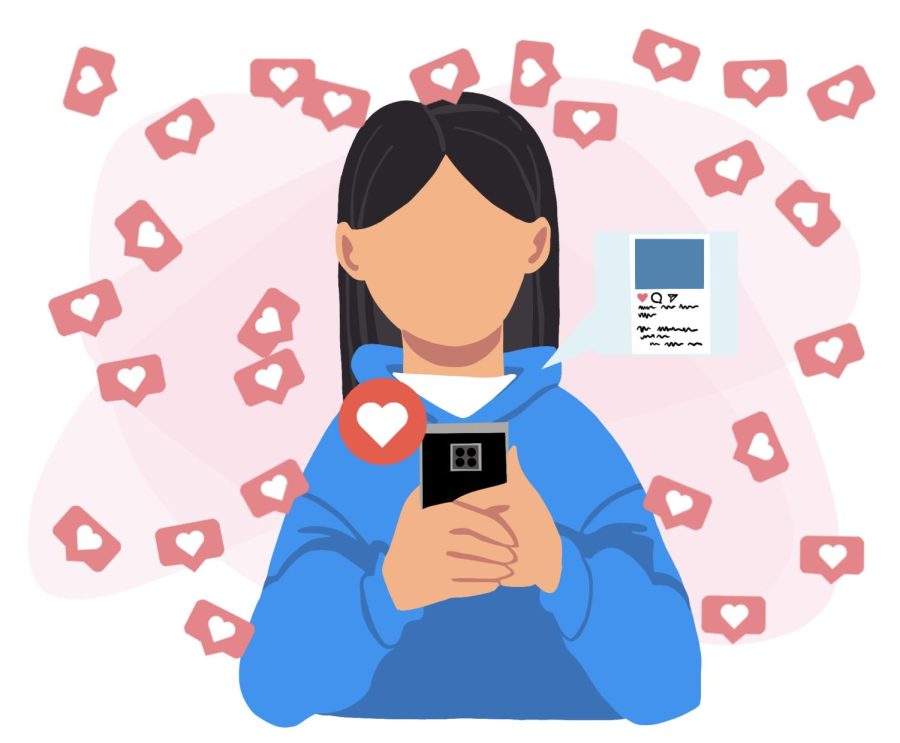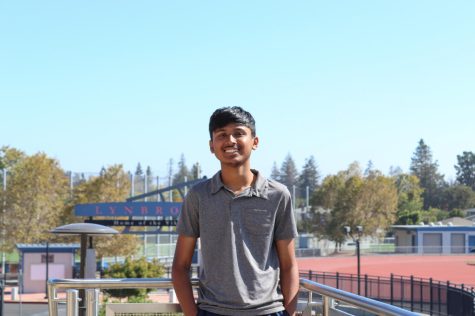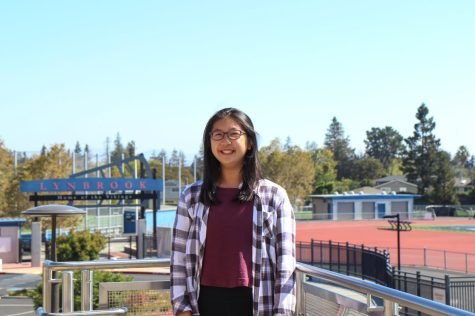Friendships, finstas and FOMO
Graphic illustration by Crystal Qian
Social media enables students to create bonds with peers and communicate with friends, but it can also be a toxic space that enables cyberbullying and increases the volatility of relationships.
February 1, 2022
A like. A comment. A text.
Social media enables students to create bonds with peers and communicate with friends, but it can also be a toxic space that enables cyberbullying and increases the volatility of relationships.
With the evolution of social media platforms, friendships have extended beyond chatting occasionally online to keeping streaks on Snapchat and FaceTiming. Some friends are more active on social media than others, and communicating with them more through these platforms can lead to closer relationships with these friends than others. Still, others find that this does not create a difference in their friendships.
“I think what it does is it strengthens all those bonds,” freshman Aaditya Jain said. “Because with your close friends, you’re always talking with them. But with people who aren’t that close, you can still reach out to them, you can still talk to them.”
In addition to keeping up with existing friends, students can meet more people who share interests, commonly through online cooperative games or streaming. Social media has also allowed some to stay close to their childhood friends, who may longer be going to the same school as them, or reconnect with them after a period of absence.
“I meet a lot of people online — for me, it’s from Discord and video games,” junior Stefano Pena Segovia said. “I know people from North Dakota whom I’ve never talked to in person, but I know them through Smash Bros.”
Although he has never met them in-person, Segovia and his gaming friends are all familiar with each other’s faces, as they turn on their cameras to greet each other.
Other students who are not as outgoing online can make new friends through mutual friends, which they may be more comfortable with.
“If one of my friends is already friends with someone else, then it’s easier for me to go and talk to that person,” freshman Nidhi Parthasarathy said.
Services on social media, such as “discover people nearby” on Instagram and mutual friends on Facebook, have allowed students to amass followers, many of whom they do not know on a personal level, while carefully curating an Instagram profile that represents themselves in the best light.
“I think it relates to how our generation has been brought up with social media,” Jain said. “Many people feel it’s a necessity to have a lot of followers and nice photos on their Instagrams to base self-worth [on].”
People also tend to share photos of gatherings and parties with friends and classmates through Instagram and Facebook. When friends find out about gatherings that they were not invited to, it can make them feel left out or wonder why they were excluded.
Fear of missing out, also known as FOMO, is a widespread issue across all social media platforms. Beyond obsessively keeping up with their feed to stay in the know about social gatherings, friends and acquaintances alike request to follow finstas, a portmanteau of “fake Instagrams,” of those they know to ensure they do not miss out on interpersonal drama. Someone with a large social media account often runs a smaller private account designed for obscurity, where they can express more personal sentiments and are free from expectations to uphold the personality cultivated on their main account. Being accepted or denied when requesting to follow a finsta suggests whether a person is close enough with the owner to be privy to these thoughts, creating an additional dimension of friendship in the already complex world of high school relationships.
On these accounts, people feel free to spam, post less-curated photos and fill captions with random rants that are directed toward someone, which can be a form of cyberbullying and gossiping. Finstas become places for friends to talk behind each other’s backs, where they can vent about the object of their frustration without the tension that accompanies a real life confrontation. Offline, they may be friendly, but below the surface, there may be drama that is left unaddressed.
“Personally, I feel like finstas are alright to have and use in moderation,” junior Paulina Chin-Wong said. “I do not have one, but I have friends who do. For my friends who have them, they use them for specific social cliques. For example, one of my friends whom I go to dance with uses her finsta to vent about class, body aches and pains.”
Finstas can also serve as a space for friends to get closer and for individuals to share more personal experiences. It can be a comfortable platform that helps individuals set limits with people on their main account by taking a break from viewing their friends’ posts without awkwardly unfollowing them.
“There’s some things that you don’t want to post to all of your followers — but that you also want to post to some people,” Jain said. “It’s like having a close friend group you tell stories with.”
When used appropriately, social media is a vehicle to connect with peers in one’s community and strengthen friendships.




































































